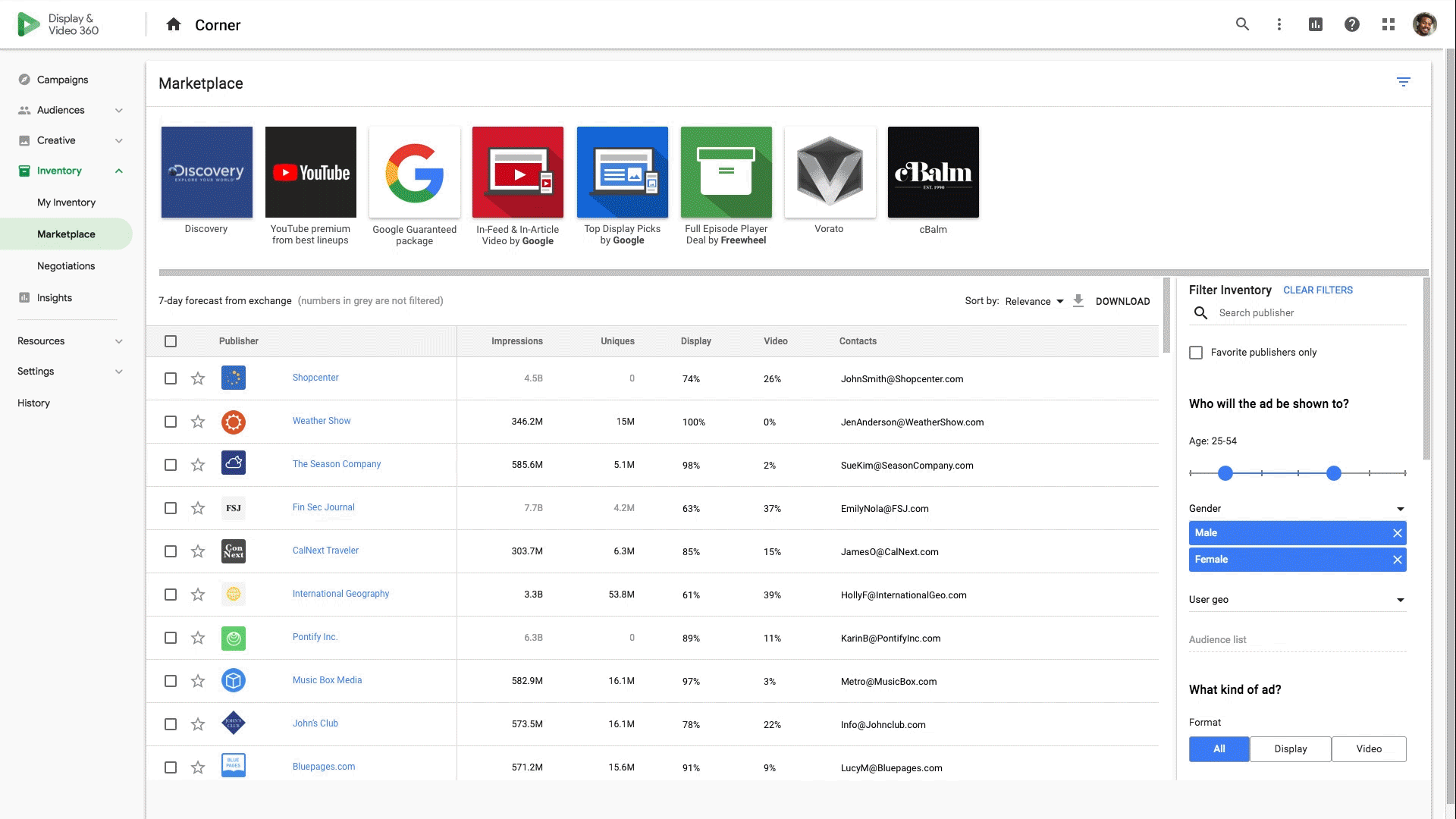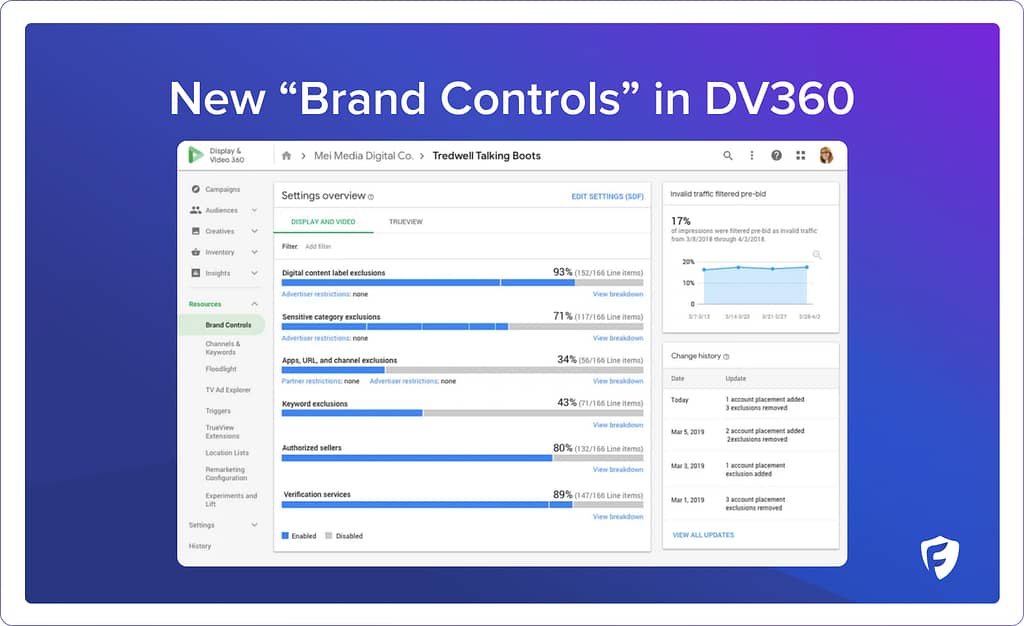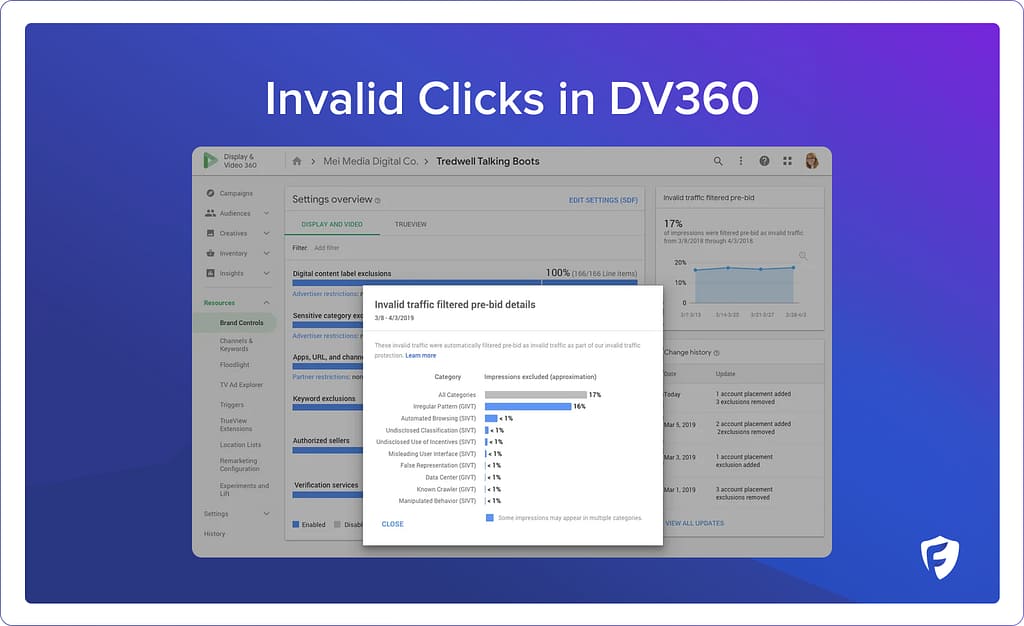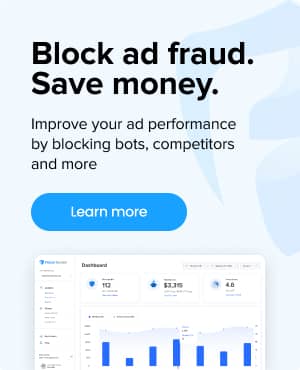What is Google DV360?
Google’s Display & Video 360 (DV360) is a demand-side platform (DSP) that allows you to buy, manage, and measure your digital media in one place.
It is one of the most advanced programmatic advertising platforms available today, and allows you to take full control of your campaigns.
How does DV360 work?
DV360 is an end-to-end solution that helps marketing teams execute their marketing campaigns. Here are some of the things you can do with DV360:
Design Creatives: DV360 provides tools to design and manage a variety of ad creatives, supporting diverse formats and interactive elements.
Organize Audience Data: It allows for the aggregation and segmentation of audience data from multiple sources for targeted campaign planning.
Purchase Inventory: DV360 offers access to a broad spectrum of ad inventory across different platforms, including premium sites and various ad exchanges.
Optimize Your Campaigns: The platform employs machine learning and real-time bidding to continually optimize ad placements and bids.
Collaborate Across Teams: DV360 facilitates sharing insights and data across different teams, ensuring cohesive campaign management.
Analyze and Control Your Budget: It provides detailed insights into budget allocation, invoicing and ad placements, offering a high degree of control and transparency.
Automates the Buying Process: DV360 automates tasks like bidding and offers analytics and recommendations for campaign improvements.
Example of options such as “Brand Control” available in DV360
Benefits of using Google’s DV360
Granular Audience Targeting: DV360’s strength lies in its ability to dissect audience data, offering targeting options that are nuanced and highly personalized.
Multi-Device Reach and Tracking: Understand and engage audiences across various devices, ensuring a unified advertising message and experience.
Integration Ecosystem: Seamlessly integrates with other Google tools, providing a cohesive and streamlined marketing approach.
Management and Collaboration: DV360 makes it easy to control diverse campaign elements from a centralized location, and offers tools for team collaboration across different functions for a more cohesive campaign strategy.
In-depth Reporting and Analytics: Offers detailed reports and analytics, enabling advertisers to make data-driven decisions.
How much does Google's DV360 Platform cost?
DV360 vs. Google Ads: What's the difference?
DV360 is a robust platform for programmatic advertisers, while Google Ads is more suited to direct, PPC advertising strategies. It also offers a broader and more precise option for targeting compared to Google Ads. Here are 5 key differences:
Access to Additional Display Inventory
DV360 also has a variety of different ad exchange networks across mobile, desktop, and CTV/OTT so their inventory is bigger, reaching approximately 1 billion unique websites.
More Advanced Automation and Bid Strategies
DV360 leverages machine learning to enhance campaign performance, taking into account over 50 factors such as the type of creative, context, audience characteristics, time of day, and specific tactics of each line item.
This level of granular optimization predicts the performance likelihood of each impression, translating it into more effective bids. This contrasts with the more generalized approach of Google Ads, making DV360 a more precise tool for bid optimization.
Precise Targeting Options
DV360 offers a breadth of targeting options, surpassing those available in Google Ads. It includes the integration of first-party data such as Analytics 360 audiences, DMP audiences, Google Ads lists, YouTube audiences, and more.
Moreover, DV360 provides access to 2nd-party data through direct deals with publishers and a rich variety of Google’s data segments like affinity groups, in-market audiences, and custom intent data. This expanded targeting capability enables more nuanced and effective audience engagement.
Manage Direct Deals with Publishers
Negotiate direct ad deals with publishers such as Discovery.com or NYT.com? DV360 allows advertisers to engage in private auctions, preferred deals, programmatic guaranteed deals, and tag-based deals, unlike Google Ads, which primarily offers open auction buys. This variety in buying options, along with increased security and transparency, grants advertisers greater control over where and how their ads are placed.
Here’s an example of Google’s Direct Deal Marketplace in DV360:

Dynamic Creatives
DV360 empowers advertisers to customize creative ad messages using first-party data signals. Because of this, DV 360 excels in offering dynamic creative solutions that adjust messaging based on audience data. You can create more relevant ads targeting specific user groups and the surrounding content, which should improve the impact of your advertising campaigns.
Sophisticated Ad Serving Options
DV360 offers sophisticated frequency capping options at both the insertion order (IO) and line item levels. This allows advertisers to strategically distribute ad impressions across different ads and audience types.
This nuanced approach to frequency capping helps in maintaining the right balance between maximizing conversions and avoiding ad fatigue, a level of control less attainable in Google Ads.
Enhanced Campaign Security
DV360 integrates with third-party services like DoubleVerify and Integral Ad Science, enhancing campaign viewability, fraud prevention, and brand safety.
These integrations complement DV360’s internal campaign setup features, offering an additional layer of security and control that goes beyond the capabilities of Google Ads.
Challenges and limitations of DV360
Cost Considerations: For smaller businesses or campaigns with limited budgets, the cost of DV360 can be a significant barrier.
Platform Complexity: DV360 has advanced features that demand a certain level of expertise, which might require training or hiring specialists to manage campaigns and analyze performance.
Performance Transparency Issues: While improvements have been made, some aspects of the programmatic process remain opaque, especially regarding ad bidding and fee structures.
Frequently asked questions
Which types of businesses are best to use DV360?
When thinking about DV360 for your business, it’s critical to understand how its features align with your specific advertising needs and objectives. DV360 isn’t a one-size-fits-all solution, and its effectiveness varies depending on several factors. Here’s a quick breakdown by business size and ad budget:
Large Enterprises: For large businesses with substantial advertising budgets, DV360 may be ideal due to its advanced targeting, extensive access to premium inventory, and detailed analytics. For instance, a multinational company launching a global branding campaign can utilize DV360’s diverse ad exchange networks and sophisticated targeting options.
Medium-Sized Businesses: Medium-sized businesses with moderate budgets can also benefit from DV360, especially if they are looking to scale or enter new markets. DV360’s has programmatic capabilities that can provide these businesses with the tools to compete against larger players.
Small Businesses or Startups: While DV360 offers advanced features, its cost and complexity might not make sense for smaller businesses with limited advertising budgets, and it may be easier to use platforms like Google Ads, which offer a simpler and more cost-effective approach.
Does DV360 have less ad fraud than Google Ads?
Ad fraud can be difficult to quantify as publishers don’t publish their internal fraud data.
DV360 claims to offer better fraud prevention controls than Google Ads by integrating with third-party services like DoubleVerify and Integral Ad Science, but it’s unclear just how much impact that has.
Consider using independent ad fraud prevention tools, such as Fraud Blocker, to block fraud and improve your performance.
Here’s an example of their “invalid” click filter:
To prevent ad fraud and improve your ad performance, consider using independent ad fraud prevention tools, such as Fraud Blocker.
Related glossary terms:






